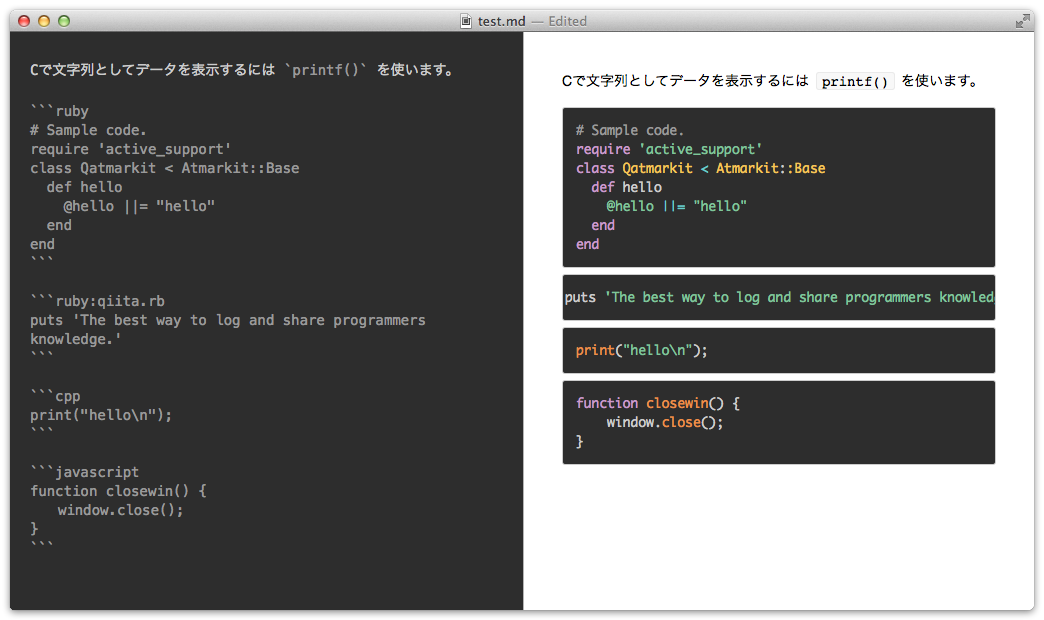


When I discovered the rticles package, I was saved. tex file, and then re-do the cutting and pasting.
#MACDOWN CITATIONS UPDATE#
However, if I went down this path, then every time I wanted to update the document, I would have to generate a new. tex file using knit.ĭoing this process one time isn’t so bad. I was worried I would have to hand-paste in the necessary header after generating a.
#MACDOWN CITATIONS HOW TO#
My intended journal provided style files for LaTeX, and I wasn’t sure how to apply those to my R Markdown document. When I first went about preparing my manuscript for publication, I was in minor despair.
#MACDOWN CITATIONS PDF#
In particular, some points are tailored to making PDF documents if you are trying to create a document that renders to HTML, or renders to either HTML or PDF, much of this advice would not apply, because many of the tips involve LaTeX formatting, which does not always render to HTML documents. Some of this advice is helpful for any R Markdown document, while some is more specifically targeted at manuscript preparation. This post is a non-comprehensive list of tips, issues, and tricks that I ran across when doing this process myself.

Unfortunately, the journal has various style and formatting requirements, and your rendered RMarkdown report is not that.Īlthough many tools have been built to ease the process of formatting an R Markdown report to make it look like an academic article, there are still some quirks involved in turning an R Markdown document into a publication-ready document. You’ve finished your work, and you want to submit your manuscript for publication. I support your endeavor, especially as it is a good practice for reproducible research. It feels good to ignore new editors that come out every few years, like Atom and Visual Studio Code.You’ve taken the leap, and you wrote a manuscript using R Markdown. To me, Vim comes close to being the perfect editor and I probably won’t need to switch ever again. The learning curve is very steep and it took me a year to master it, but investing time to be truly comfortable with my #TextEditor was more than worth it. I wanted to "look like a hacker" by doing everything inside my terminal and by becoming a better Unix citizen.it is a reliable tool that has been around for more than 30 years and will still be around for the next 30 years.your fingers literally don’t ever need to leave the keyboard home row (I had to remap the escape key though).After 3 years of wearily moving my arm and hand to perform the same repetitive tasks, I decided to switch to Vim for 3 reasons:

I extended the editor with custom Python scripts that improved keyboard navigability such as autofocusing the sidebar when no files are open, or changing tab closing behavior.īut customization can only get you so far, and there were little things that I still had to use the mouse for, such as scrolling, repositioning lines on the screen, selecting the line number of a failing test stack trace from a separate plugin pane, etc. I liked Sublime Text for its speed, simplicity and keyboard shortcuts which synergize well when working on scripting languages like Ruby and JavaScript.


 0 kommentar(er)
0 kommentar(er)
